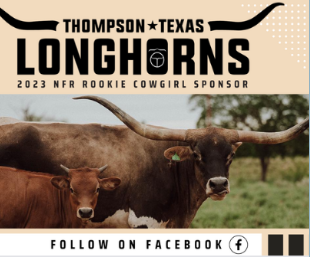| NEXT RODEO: |
| HUGHENDEN RODEO, FESTIVAL OF THE OUTBACK SKIES QLD | MAY 03 | ENTRY DATES: 23/24 April |
| NARRABRI RODEO, NSW | MAY 03 | ENTRY DATES: 23/04-24/04 |
| BLACKWATER MEU MAY DAY RODEO - QLD | MAY 04 | ENTRY DATES: April 23/24 |
| M5 MELBOURNE MUSTER PRO RODEO | MAY 04 | ENTRY DATES: 23/04-24/04 |
| ST GEORGE SHOW RODEO | MAY 05 | ENTRY DATES: 23/04-24/04 |
| ROAD TO RODEO MOUNT ISA, QLD - CANCELLED | MAY 11 | ENTRY DATES: 15/23 April |
| NEBO HOTEL NEBO RODEO - QLD | MAY 17 | ENTRY DATES: 08-05-2024 - 09/05/2024 |
| COLLINSVILLE RODEO - QLD | MAY 25 | ENTRY DATES: 15-05-2024 -16/05/2024 |
| BLACKALL BLACKSTUMP BONANZA XTREME BRONCS | JUNE 01 | ENTRY DATES: 22/05/2024-27/05/2024 |
| CLERMONT RODEO - QLD | JUNE 01 | ENTRY DATES: 22/05/2024-23/06/2024 |
RODEO INJURED ANIMAL AND CARCASS REMOVAL PLAN
Animals used in Rodeo receive unequalled care and attention, however, there are rare occasions when an animal receives an injury and/or has to be euthanised. This plan is to be used as a guide for such occasions. It is recognised that this plan will not cover all contingencies and circumstances will alter courses of action. Therefore the plan is flexible and is to be used as best practice in this field.
Some States demand at law the presence of a Veterinarian at all Rodeos which includes Rodeo schools. Where that is not a requirement by law it must be considered best practice and if not able to be present should at least be on call. Where a Veterarinian is not present there should be a competent stock person often known in Codes of Practice as a ‘Livestock Supervisor’ present who has responsibility for the welfare and all Rodeo livestock. This person is independent of the Stock Contractor. The Stock Contractor, being to owner of the livestock does have primary responsibility for the welfare of their stock and any decision without the advice of a Veterinarian should be made in tandem.
There should be a clear line of authority made prior to the Rodeo commencing as to who is to provide direction and make decisions where stock are injured or require ethanising and extraction from arena. Where a Veterinarian is present they will make decisions regarding to welfare and treatment, however, decisions regarding extraction should be made using this plan by the nominated person in charge ie: Stock Contractor, and/or Livestock Supervisor. Where there are multiple contractors the primary contractor should assume that responsibility and be nominated.
All Rodeo Officials should be aware of this plan, have a copy and know who is in charge of its’ execution prior to the commencement of the Rodeo.
Standard Operating Procedure for Removal of an Injured Rodeo Animal and/or Carcass from Rodeo Arena
· A suitable vehicle and conveyance MUST be available at all times to remove injured livestock or livestock that has died or been euthanised from the arena. The most suitable conveyance is a rubber belt sled.
· A screen MUST be on hand to use when treating or euthanising injured livestock.
· Livestock that are frequently housed or grazed with animals being used in Rodeo MUST be readily available to put into arena to settle injured livestock if required.
· Accomplished stockpersons MUST be on hand and readily available to assist in the confinement or removal of injured livestock from the arena to a suitable facility where they can be treated. Stockpersons aim is to restrict the movement of the injured animal as much as possible. It is recommended that stockpersons should be mounted, carry a rope and be capable of roping and handling a large animal and as calmly as possible coach it to secure facilities for treatment.
· All reasonable attempts should be made to entice the injured animal to move to secure facilities of their own accord.
· In situations where this does not occur within a reasonable time frame and a Veterinarian is in attendance and in possession of a ‘jabstick’ injector, it may be used providing the vet or nominated person is capable and confident that they can administer the drug in a safe manner and without causing further stress and discomfort to the injured animal.
· If required a bolt gun, firearm or lethal injection may be used to euthanise the seriously injured animal.
Prepared by:
Steve Bradshaw,
Animal Welfare Representative,
Australian Rodeo Federation.
